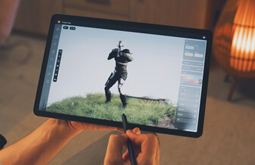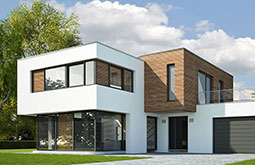15 Important Tips for Photorealistic 3D Rendering
There are several aspects that 3D rendering experts need to focus on in order to offer effective product renderings. Notably, incorporating the right methodology to correct the lighting or modeling feature is just a small part of a big equation. Let’s take a look at some of the crucial 3D product rendering tips mentioned below, which would help in the creation of high-quality and realistic 3D rendering outcomes:

-
Start with a decent reference material
In case if you a modeling something that exists already, gather maximum possible reference material to get the needed views from the top, side and front. This will make sure that the model looks perfect from all the angles. Always take care of the proportions as if you get them wrong, the final render would not appear to be photoreal 3D.
-
Scale to the real world
In order to create photorealistic models, set the scene units correctly and model to the scale of real world for assuring photorealistic rendering. This is important to make sure that the scene lighting behaves just as in case of real life. This helps in future-proofing as well when you need to introduce any sort of dynamics later on, like that of cloth or liquid, that depends on your actual units for setting up correctly.
-
Mesh should be kept clean
It’s always good to assure that the mesh is clean as well as comparatively low-poly. This is one of the proven product rendering techniques and helps in keeping the scene size lower thus making the complex models easily workable. Also, you model will be appropriate for any scenario. TurboSmooth modifier is a great option to choose.
-
Make the hard edges softer
There are rarely any sharp edges for the actual real-world objects. So, by softening the hard edges, you can make the models look realistic. Also, when illuminated, these edges will be nicely highlighted. However, chamfering them can be a bit tedious when the models to work with are complex.
-
Try to avoid Booleans where possible
When it comes to the process of 3D modeling of non-organic shapes, you may be tempted to incorporate Boolean holes to eliminate the complicated process of making the holes using your hands. For low-resolution renderings, this strategy may work out well. However, when you deal with renderings with high-resolution, this produces results that are unpredictable. High quality 3D rendering benefits can’t be overlooked, so, this has to be kept in mind.
Besides, when the mesh becomes untidy, it will not be able to refract and reflect the lights in the right way. Booleans may change the refractions and reflections in the model, therefore, it is advisable to avoid them as much as possible.
In order to make holes on a flat surface, the mesh has to be converted to an editable poly. You need to chamfer a particular vertex from the ‘Vertex Selection’ option. You will get a square shape, within which a diamond-shape will be visible. You need to cut the corners of the squares using the ‘Cut’ tool. Now, you need to scale up the four points at the side of the diamond shape, which will result in a circular image. Now, the faces of the circle have to be deleted and the mesh has to be extruded. You need to incorporate a turbo Smooth and this will help you to get a perfect, round hole.
-
Pay attention to even the minutest of details
Small details in 3D product modeling have the capacity to alter the whole level of perception. It may tempt you to proceed with the shortcuts and ignore small details that are not clearly or easily visible. These minutest details in fact are highly influential in tricking the viewers to make them believe that the render is real.
-
When needed, make use of override materials
When a product is rendered in a studio, images can be overpowered by the background colour. This can affect the reflection, shadow colours, GI and refraction in 3D rendering and visualization. This may be fine in certain cases but a lot of exceptions are there. The effect can be manipulated by make using of a VrayOverrideMtl which can be really helpful.
-
Incorporate a linear workflow
In order to make the results of your rendering realistic, use a 32-bit linear workflow. The 8-bit images, like .jpg, .tga and .bmp files get gamma-encoded when they are saved. This makes them look accurate on the monitor. However, the visible image is not the actual one, but a misinterpretation.
When these images are displayed, they look much darker. Therefore, it has to be adjusted when you light the screen. You need to add more lights and their intensity has to be increased. This is a time-consuming process and will increase the overall render time. You can render the same light settings, with a linear workflow devoid of it.
While using a linear workflow, you can use real-world settings to light up the scene. Evidently, no lighting tricks are necessary to make the images look realistic.
As a result, you need not deal with contrasted renders and highlights that are blown out. This 3D lighting techniques make the colour reproduction and lighting more natural.
-
Three-point lighting
When you light up products in a studio, three-point lighting proves to be an ideal set-up. This setting consists of a key light, a fill light and a back-light. The key light, being the primary source of light, brightens up the product. It strongly influences the look of the shot. On the opposite side, the fill light is placed and it has a lower intensity. The function of this light is to eliminate the shadows produced by the key light. You need to place the back-light behind the product, in order to make look it three-dimensional. It separates the object from its background.
-
V-ray settings
For new users, this setting can be a bit difficult to incorporate. However, experienced professionals can deal with these settings with adroitness. Well, you cannot term any setting as ‘right’ or ‘wrong’. It is dependent on the scene that gets illuminated and its desired look. However, the settings presented here will help the users to get started started to make VRay render more realistic.
-
Control shadows using a VRayLight
It is recommended not to use a VRaySun or directional lights to produce sharp shadows. A standard VRayLight will serve the purpose. You may scale it down, which will help you to obtain a higher intensity.
When you apply shadows using this mechanism, you gain a complete control over the sharpness and softness of the shadows. A small light will produce a sharper shadow, as its intensity is high, while a larger one, with low-intensity, will produce a softer shadow.
You may disable the Affect Reflections and Affect Specular in the VRayLight settings. However, the light will influence only the diffuse channel. When you incorporate one of these lights in a three-point lighting set-up, you can get a better result. The product will be well-lit and the sharp shadows will be produced only in a single direction.
-
Render in slots
When you render in passes, time can be saved and quality can be improved. It may take some time for setting up the scene but when you are rendering images with higher resolutions, rendering of different phases can be done simultaneously which is very beneficial.
Try adding photometric lighting to the renders
Most architects and 3D artists miss out on this. However, adding it can help in mimicking the natural lighting to the maximum possible extent. It can do wonders when it especially comes to architectural 3D visualization.
The photometric lighting effect can be achieved with IES light profiles. It can help in digitally quantifying various lighting aspects, like fall-off, shape, and luminance. With this, you do not have to waste time on creating the natural light yourself and achieve an even better result.
Use the blurred background effect
It is one of the quickest ways to add photorealism to your architectural 3D renders. It is usually achieved by adding the depth of field. The effect will blur the background and will bring the main object into focus.
This effect will also help to improve composition and make the renders look more realistic. It is very effective when it comes to controlling 3D models during post-production.
Incorporate the color fringing phenomenon
With this phenomenon, you can add a subtle red and blue outline to the highly contrasting edges of the renders. It can give an incredibly lifelike appearance to your property images. However, make sure that you do not overdo it.
Achieving this is not at all complicated. You only need to ensure that the color specters are rendered at the exact convergence point in the renders. Besides, the phenomenon is also referred to as chromatic aberration.
Conclusion
Photorealistic 3D renderings are now frequently required for most mainstream sectors. From eCommerce, furniture, AEC, and real estate to apparel, fashion, jewelry, healthcare, and more. 3D-rendered visuals have become a staple for these sectors due to their significant visual impacts on the audience.
However, creating these high-detail visuals involves specific rules and guidelines. Our quick compilation of some handy tips will guide 3D professionals to enhance their workflow. Following these tips, they can ensure the best quality in the final outcomes.
Alternatively, if you are a 3D artist looking for reliable 3D rendering services, start outsourcing your projects today. Offshore the rendering process to professional experts who have access to the latest technologies and software. Braced with cutting-edge tools and vast experience, they deliver world-class 3D renders. Also you can get in touch with 3D product visualization companies a team and improve your workflow.



